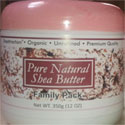I LOVE results focussed business owners. And I’ve found Livestock Farm CEOs especially fit that description better than most other business owners I’ve worked with.
For instance, within hours of purchasing my Feed Formulation Handbook and Software, a few days ago, a new (Jos, Plateau state – based) buyer called to ask how he could safely use Blood Meal to boost protein content of rations he formulates.
He wanted to know if collecting and using raw blood directly from an abbatoir he’d visited would be okay…
I quickly explained that raw blood was not the same as blood meal. The latter is a product derived from the former, via certain processing steps. If the former is used without such processing, a great danger of passing infection to one’s animals exists.
That’s apart from negative effects on physical compounding of the ration.
I was however in a meeting with a Piggery farm business consultant, inside the Berger branch of Tantalizers Fast Food restaurant, when his call came in. So I promised to compile some notes with more detailed explanations, and email to him later on.
What I share below, are excerpts from the notes I sent him today…
Hi H<name removed for privacy>,
It took me a while to get back to you on this, because my client – the Director of a Private University here in Cotonou – called AFTER I purchased the domain name and hosting for their university’s website that they paid for, and asked that I help build it as well. So, I’ve suddenly had to take on additional tasks, as they want the project started immediately.
Anyway, I think I’ve now compiled enough relevant page excerpts that you can study to get a feel for how blood is obtained and used for making blood meal.
===
1. http://www.feedipedia.org/node/221
This website discussed features of blood meal, and provides a description of the process that is entailed in producing this high animal protein content feed ingredient.
2. http://ingredients101.com/bloodmeal.htm (BLOOD MEAL, WHOLE)
This website offers a description of a more sophisticated procedure for processing blood into blood meal. This involves the use of equipment such as on-site cooling tanks, which have in-built agitators to stop the blood coagulating.
And then in the final stage, a centrifuge is used to separate out foreign matter from the blood, before it is sent through a “disintegrator” which removes any remaining extraneous bodies after which it is subjected to “spray drying”. Some details about how the finished product is bagged and stored are also mentioned.
Something you may find interesting is a chemical composition analysis result table published on that page. It confirms the fact that blood meal is a very good source of Lysine, a key amino acid for ration formulation.
3. http://msucares.com/pubs/bulletins/b1041.htm
In addition to also describing Blood Meal, and what it is made from, this third website makes interesting references to different animal rations in which blood meal is known to be used.
I must say here that I am not sure how widespread the use of blood meal remains in the industry today…
The feed mill in Oko Oba, Lagos, where I conduct practical Feed Formulation & Compounding Training for Farm Owners who sign up for it, to the best of my knowledge does NOT sell Blood Meal.
And I have never heard any of the numerous customers that come there to make bagged feeds request for it.
It would appear most people would rather avoid the risk of using ready made ones or the hassle of making their own.
Neither issue however stops anyone willing to do it right from going ahead and succeeding. So if it appeals to you, just take the needed precautions and do it.
Remember that ingredients like blood meal, despite having high desired nutrients, can often NOT be used in large amounts.
Usually 5%, to an upper limit of 10% is what I have seen used.
This is mainly because apart from its tendency to pre-dispose the resulting feed to quicker deterioration (being a rich medium for microbes to grow), blood meal also tends to reduce palatability as it’s inclusion level (usage) is increased in a ration.
The reactions will of course vary from one animal group to another. That goes without saying.
Which is why I always encourage farmers to use what they read or are told by support specialists (like me!) ONLY as a guide.
Final Words: So, my advice is therefore for you to TEST, TEST, TEST and test everything you read, or are told – BEFORE accepting that it will work for you or not!
FIRST try it out on a micro/pilot case. Possibly by isolating a few animals and trying out the new ration to see how they respond, before deciding to use it across farm.
That’s the way it’s done ALL over the world.
Like I keep trying to tell as many Farm CEOs as will listen: You do NOT need a PhD in Agricultural research to conduct trials on YOUR farm.
You see, the very fact that you own a real life functional farm operation, amply QUALIFIES you to explore best practice ways to improve YOUR farm processes.
All you need it guidance to proceed intelligently, so you can get RELIABLE results.
I offer that guidance via my Best Practice Support Solutions, to those who take up my offer.
As long as you’re careful, and painstaking, you should eventually find out what works best for your animals.









Warning: count(): Parameter must be an array or an object that implements Countable in /home1/tayoswdg/public_html/sdnuggets/wp-includes/class-wp-comment-query.php on line 399